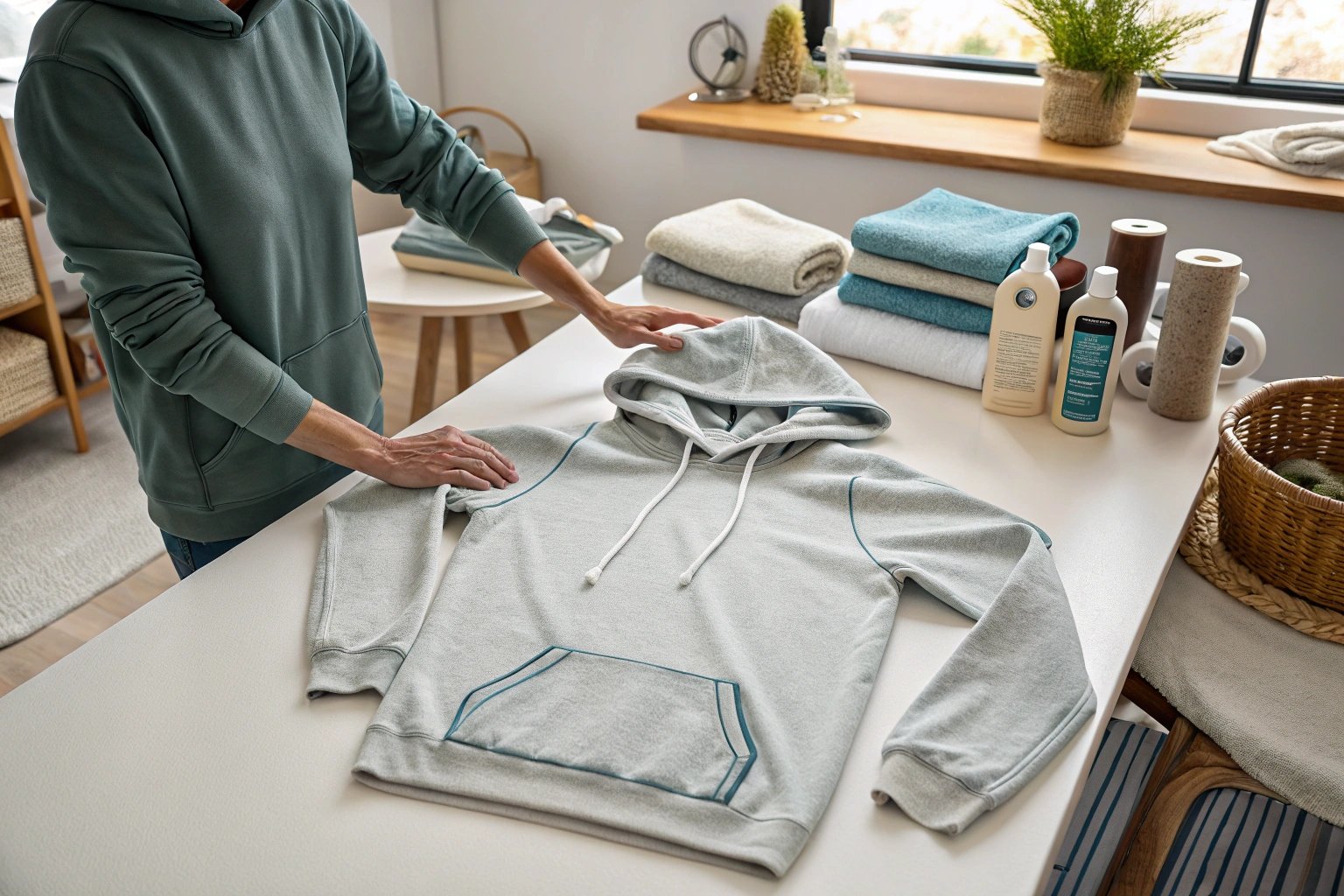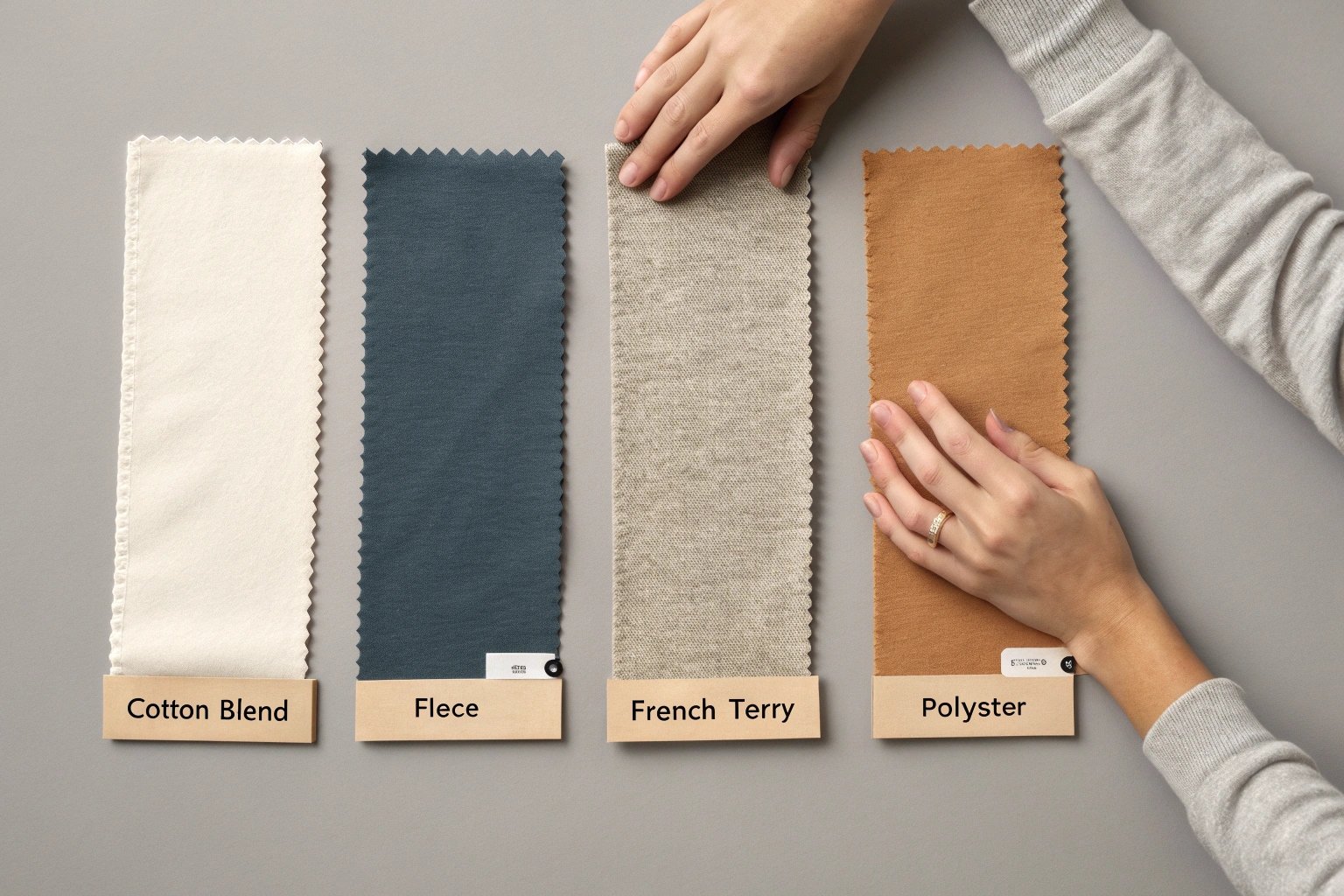That perfect hoodie feels just a size too small—don’t toss it just yet.
You can upsize a hoodie using fabric stretching, strategic steam, damp press methods, or inserting panels—each approach depends on your material and desired fit.

One winter, I ordered a batch of hoodies that shrank slightly during post-production drying. Rather than wasting hundreds of units, we tested ways to make them wearable again. Surprisingly, a few steaming and reshaping steps did the trick. Whether you’re fixing shrinkage or sizing up for comfort, here’s how to make a hoodie roomier without ruining its shape. Each method works differently depending on fabric type, design, and how much room you want to add. Below are four techniques we’ve used in both workshop and retail returns to make snug hoodies wearable again.
Can steam stretching safely resize a hoodie?
Moisture and heat soften fibers—making them easier to reshape.
Steam stretching loosens cotton or cotton-blend hoodies temporarily, allowing gentle hand-pulling to widen shoulders or lengthen the torso.

Start by hanging the hoodie and steaming it section by section. Focus on areas where the fit feels tight, like underarms, chest, and sleeves. Once the fibers are damp and warm, apply slow and even pressure using both hands—do not tug sharply or overstretch one side. With moderate pulling, you can increase length by up to 2 inches and width by around 1 inch. Let the hoodie air dry while hanging, without folding or squeezing. We use this process routinely in production recovery, and it works best on cotton and cotton blends. Avoid steam on plastic zippers or printed logos—they can melt or distort under heat.
What is the damp towel method?
It’s an old laundry trick—and it works surprisingly well.
Lay the hoodie flat under damp towels, stretch it out manually, and let it dry slowly in position to fix minor shrinkage or tight spots.

This method works through slow, controlled fabric relaxation. First, submerge the hoodie in lukewarm water for 5 minutes, then lay it on a flat surface. Place damp towels on top to maintain moisture while you gently pull outward on sleeves, sides, and bottom hem. This technique allows precise shaping across multiple areas. Pin down the edges or place heavy books along seams to maintain position. Let it dry naturally over 24 hours. We often use this on French terry hoodies with minor shrinkage, as it allows for subtle reshaping without overstressing seams or threads. The result feels natural, not stretched out.
Can you resize a hoodie permanently by adding fabric?
Yes—especially for fashion-forward or DIY styles.
Sewing side panels or inserting fabric under sleeves or at the hem can permanently upsize a hoodie and add stylistic flair.

If you want a permanent, visible adjustment, adding fabric panels is a great solution. We usually cut open the side seams and insert gussets—typically 2 to 4 inches wide—using matching or contrasting materials like ribbed knit or cotton jersey. This can increase both width and style points. The key is to match the fabric’s stretch and weight so the hoodie hangs naturally after the change. It’s ideal for upcycled or resale projects where creativity is welcome. Clients often love the “reconstructed” look, especially if paired with visible topstitching or color-block accents. This method adds size and personalization at the same time.
Which materials stretch best—and which don’t?
Know your fabric before you force it.
Cotton blends, fleece, and French terry respond best to steam and tension, while polyester-heavy or bonded hoodies resist reshaping.

Before attempting any resizing, it’s crucial to understand the fabric’s behavior. Natural fibers like cotton stretch more under heat and moisture, making them ideal for steam or towel methods. French terry, with its looped backing, stretches gently and evenly. Polyester-blend fleece has some give but tends to snap back after washing. Bonded fabrics—like neoprene-style hoodies or double-layer shells—should not be stretched. They often contain glue layers or foam interiors that warp or crack under heat. Always test a small, hidden patch. We’ve seen garments ruined when someone applied full heat to plastic logos or bonded seams, so proceed carefully.
Conclusion
Stretching a hoodie doesn’t need to involve tailoring or replacements. With the right technique—steam, damp press, or even sewing—you can gain extra space, fix shrinkage, or turn a tight fit into your new favorite oversized piece. Fabric knowledge is the foundation: cottons respond beautifully, synthetics need caution, and each method has its strength. Whether you’re a brand owner managing returns or someone trying to save a hoodie you love, these approaches offer reliable, practical fixes that extend garment life and comfort.

